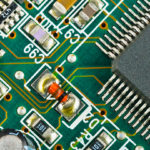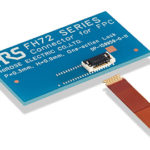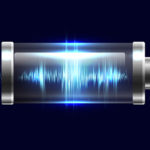The first part of EEWorld’s two-part “virtual roundtable” discussion on power system design considerations for wireless IoT nodes and wearables focuses on the use of low dropout regulators (LDOs). Our panelists are Kyle Van Renterghem, (KVR) Marketing & Applications Manager, Low Input Voltage LDOs, Texas Instruments, and Julian Hagedorn (JH), Systems Engineer, Texas Instruments. JS: […]
Wearables
Miniature FPC connector for portable electronic applications
Hirose has developed a space saving flexible printed circuit (FPC) connector with a single-action lock for portable electronic applications. With a height of only 0.9 mm and a 0.3 mm pitch, the FH72 Series is suited for applications like consumer devices, gaming, industrial, medical, wearables and more. The FH72 series has a rugged design with […]
Voice-first evaluation kit features analog processor and live-audio test option
Aspinity launched its Voice-First Evaluation Kit (EVK2), a complete hardware/software development kit that demonstrates Aspinity’s ultra-low-power edge processing solution for analog voice activity detection and preroll. The new EVK2 enables customers to easily integrate analog machine learning and analog data compression into battery-operated voice-enabled devices, such as hearables/wearables, smart speakers, and smart TV remotes, facilitating […]
Board to FPC narrow pitch connectors for wearable devices
Panasonic Corp. announced today that its Industrial Solutions Co. has commercialized the R35K series of board to FPC narrow pitch connectors for use in wearable devices and will launch full scale mass production this month. The new connectors reduce the board mounting areas and are configured to be highly resistant to vibrations and impacts, contributing […]
RISC-V is growing and offers stability, scalability and security
RISC-V is growing rapidly. Semico Research has projected that 62.4 billion RISC-V CPU cores will be sold in 2025. While that’s only about 6% of the overall CPU core market, RISC-V is an emerging technology that most designers should follow and become increasingly familiar with. RISC-V is becoming more commercially attractive as a result of […]
Battery life analysis and maximization for wireless IoT sensor nodes and wearables
In addition to proper hardware design and power consumption testing, an accurate estimation of battery life is an important aspect of designing wireless Internet of Things (IoT) sensor nodes and wearables. For some medical or industrial devices, in particular, users’ lives can be at stake if the battery does not live up to expectations. Some […]
Batteries and charging for wireless IoT nodes and wearables
Battery selection for a given wireless Internet of Things (IoT) node or wearables design is complex. Among the important factors are: how long the device is expected to operate with a single battery; the choice between various primary and secondary battery chemistries; the nominal and cut-off voltage of the electronics; the energy/current consumption profile, the […]
Power conversion considerations for wireless IoT sensor nodes and wearables
Power system considerations are an important aspect of all system designs. In the case of wireless Internet of Things (IoT) nodes and wearables, power system design is complex, with the need to balance numerous performance tradeoffs. It is critical to arrive at a successful design that maximizes both battery life and overall functionality. Fortunately, there […]
Tiny MEMs resonators integrate load capacitors
SiTime Corporation announced that it has entered the $2 billion precision resonator market with the ApexMEMS family of MHz resonators. These new devices are the third-generation of SiTime silicon MEMS technology and are available in a variety of MHz frequencies for high-volume electronics. Mobile and IoT applications such as Bluetooth wearables and wearables, high-speed connectivity […]
mmWave radar sensors feature one-inch cube form factor
D3 Engineering announced its DesignCore RS-6843AOP and RS-6843AOPU mmWave Radar Sensors. These miniature sensors enable the implementation of many different mmWave radar algorithms to measure, detect, and track. The production-intent sensors feature a 1-inch cube form factor, heat-spreading metal body, and mounting tabs. They may be used with a PC or embedded platform to facilitate […]











